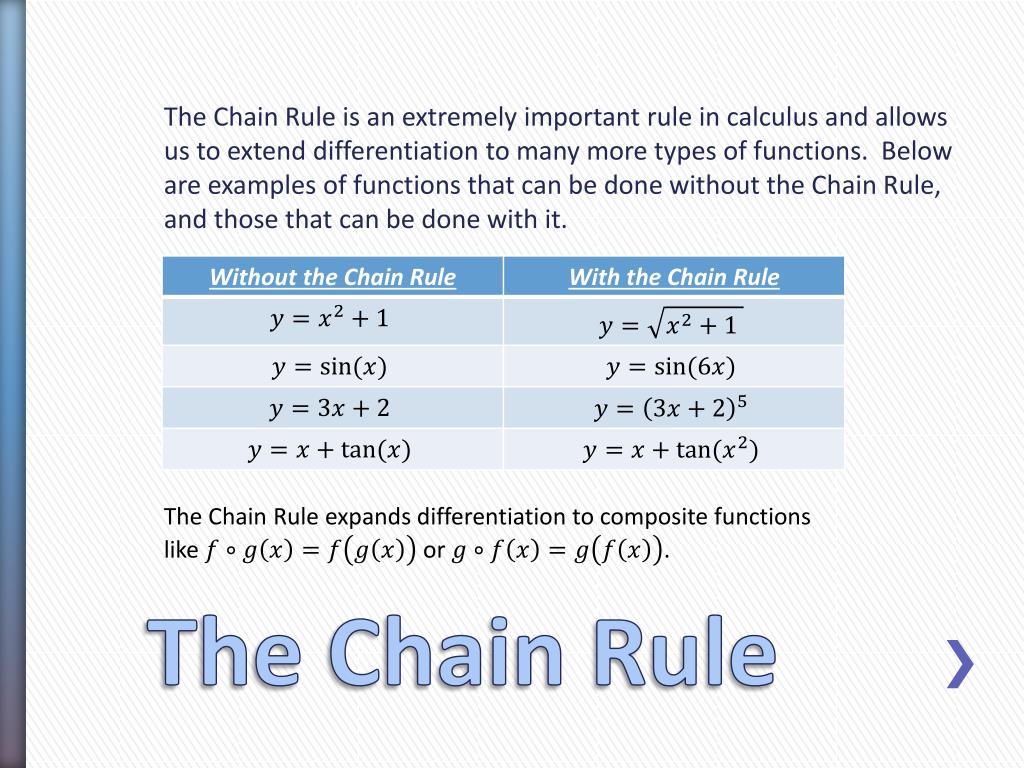

The pattern for the quotient rule can be found by changing the quotient of two functions to a product of two functions.

The pattern for product rule is: Multiply the derivative of the first function by the second function, multiply the first function by the derivative of the second function AND add up the two products. The derivative of a product (two functions being multiplied) is NOT found by multiplying the individual derivatives. When solving for x, we need to use only x's in our equation for slope of the line as a result we substitute y=2x-x^2 into this equation. Since the two slopes are for the same line, we make the derivative slope function equal the line slope function and solve for x. We know we can find the slope of a line through a know point using delta 'y' over delta 'x'. We need to practice the rules and then be able to apply problem solving skills involving slopes.Įxample 5: We know we can find tangent slope to any point on the parabola using the derivative slope. The derivative of a polynomial function with more than one term can be found by applying the Power Rule or Constant Rule to each individual term. The Original Degree of the function gets multiplied by the vertical stretch.The slope function is always one degree less than the given function.Power Rule : Looking at the pattern on polynomial functions using limits (h approaches zero) we see: If we need to find the derivative for a constant term: dy/dx(constant) = zero. Video 2: Rational Functions at InfinityĬonstant Rule: Think about the slope of y=5 or y=12 or y=-2 the slope for any horizontal line is zero.Limits to Infinity for Rational Functions Lesson.The reverse is true for rational functions: To evaluate a rational function at infinity we need to put 1/x or 1 over x to a higher degree into the rational function allowing us to use the zero property and to use the limit of a constant property. For limits to a specific number, we used math to take out fractions in numerators and denominators. To evaluate rational functions at infinity, we use some reverse thinking.

Limits to Infinity of Rational Functions (where the degree of the denominator is equal to or larger than the degree of the numerator we can create a pattern similar to a convergent sequence combined with a constant function). The limit of a function where we divide a number by x or divide by x to a higher degree is zero. The function is always approaching the same value from left and right sides (in our example, both sides approach 3) so the limit of a constant function at infinity is the constant. We looked at approaching a specific value of x and determining if a limit exists, we can also find limits to infinity if we have one of two situations: As a number divides by a larger and larger number, the quotient becomes smaller and smaller eventually becoming so small we say we have reached a quotient of zero.

Values at Domain: Graphs and Algebraically.If the first two conditions both exist, we determine if the limit equals the function and justify continuity.Points exist where we have the 'solid dot' for the function.Limits exist at 'x' if we approach the same number (same y-value) from both sides of 'x'. For a Limit to Exist: We evaluate the one sided limits of the function (left and right side functions based on the domain).There are three conditions for being continuous: the limit as you approach the x-value exists, the function exists for the x value (the point exists), and the limit equals the function value at x (limit equals the point).Use limits to evaluate a function as you approach from one side - either the left side or the right side of an x-value.Interpret the graphs of functions and identify points of discontinuity.


 0 kommentar(er)
0 kommentar(er)
